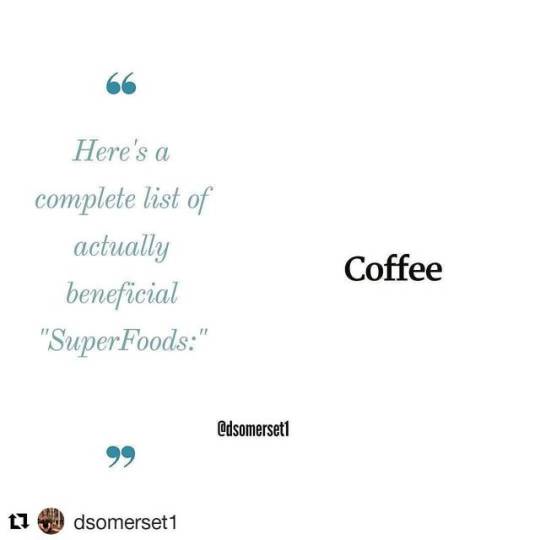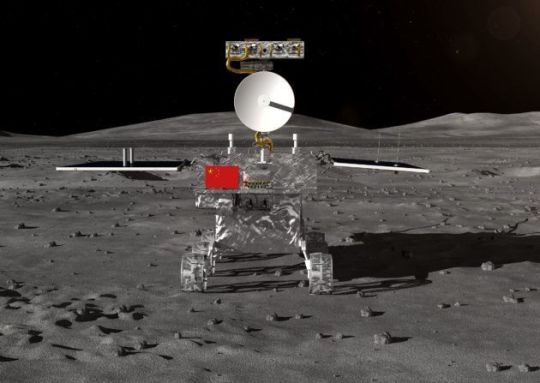#abcscience
Text

We're doing SpaceTime live on ABC Radio in Wollongong and across the Illawarra and South Coast....
#science#space#astronomy#physics#news#nasa#esa#spacetimewithstuartgary#starstuff#spacetime#abc starstuff#abcstarstuff#abcnews#abc news#abcradio#abc radio#abcscience#abc science#abc tv#abctv#abc local radio
2 notes
·
View notes
Video
youtube
WAVES — Visualizing sound through cymatics and resonant frequencies | Phenomena - from ABC Science
Uncovering the geometric nature of soundwaves. This is visualized by directing sound waves through water and salt. The water rests in an upright facing speaker, and the salt rests on a high frequency mechanical wave driver. When the devices are activated with specific frequencies, the water and salt particles vibrate in synchronization with the soundwaves, forming incredible geometric patterns. Phenomena fuses art and science together to explore naturally occurring patterns, and the fundamental forces of nature that create them, to take us on an ambitious, innovative, and psychedelic journey through the fabric of the universe. Filmmaker Josef Gatti recreates nine ‘phenomena’ to produce mesmerizing art films, which are then paired with an original music score by Kim Moyes from Australian dance music duo The Presets. #PhenomenaTV
92 notes
·
View notes
Text
The Science of Meditation
youtube
0 notes
Photo

Here's a complete list of actually beneficial "Superfoods:" Coffee ☕ @dsomerset1 Who else agrees? And did you know "for every extra two cups of coffee that were drunk each day, the risk of prostate cancer dropped by 2.5 per cent?" Show me the research!? 👇 "meta-study combined 36 studies involving over 1,270,000 participants. Again, those who had about three-to-five cups of coffee per day were at the lowest risk of Cardiovascular Disease." http://www.abc.net.au/radionational/programs/greatmomentsinscience/features/coffee-can-play-role-in-reducing-risks-of-cancer-and-diabetes/7640766 #coffee #abcscience #drug #preworkout #science #kelvinpohpersonaltrainer (at Revenue House)
0 notes
Text
중국 달 탐사선 '창어 4호'가 달에서 발아시킨 목화 싹이 죽었다
중국 달 탐사선 '창어 4호'가 달에서 발아시킨 목화 싹이 죽었다

Did you hear about the seedlings on the Moon?
They're dead already. 🌘🌱💀😢
Darkness fell on the Chang'e 4 lander on Sunday; the temperature in the biosphere canister quickly plummeted and scientists from Chongqing University say the experiment is over.
RIP, lunar cotton! 👋 pic.twitter.com/3PlQCg1XN6
— ABC Science (@ABCscience) January 17, 2019
https://platform.twitter.com/widgets.js
중국 연구팀이 세계…
View On WordPress
0 notes
Text
0 notes
Text
Google thinks URLs 'kind of suck'. Is it time for something new?
New Post has been published on https://britishdigitalmarketingnews.com/google-thinks-urls-kind-of-suck-is-it-time-for-something-new/
Google thinks URLs 'kind of suck'. Is it time for something new?
Asked about his regrets in 2009, internet pioneer Tim Berners-Lee told the New York Times he would get rid of the double slash “//”after the “http:” in web addresses.
Almost one decade later, he is not the only one having second thoughts about the Uniform Resource Locator, better known as the URL.
This familiar band of characters in your web browser helps you navigate between websites without having to worry about the complex requests occurring beneath the surface.
But there is a growing group who thinks the URL is increasingly complicated and too easily compromised.
Engineering manager of Google’s Chrome browser, Adrienne Porter Felt recently sparked a Twitter firestorm when she told Wired the company was giving the display of the URL a significant rethink.
“They’re hard to read, it’s hard to know which part of them is supposed to be trusted, and in general I don’t think URLs are working as a good way to convey site identity,” she said.
Parisa Tabriz, director of engineering at Chrome, told the publication that change will be controversial.
“But it’s important we do something, because everyone is unsatisfied by URLs. They kind of suck,” she said.
Twitter critics saw the move as an attempt by the technology giant to further control the internet, but the debate raises some important questions.
Do you need to show all the URL or just a bit of it? Do you need to show it at all?
What’s wrong with the URL?
To understand the URL’s shortcomings, you need to know what it means.
Take a look at this URL:
You can break it down into three parts:
http://: This is the scheme. Typically, you’ll see either http:// or https:// in a URL. Standing for Hypertext Transfer Protocol, HTTP provides the underlying architecture of the internet by facilitating communication between servers and clients like websites. Hypertext Transfer Protocol Secure (HTTPS) is the secure, encrypted version of HTTP.
www.abc.net.au: This is the host. It tells you the identity of the website you’ve navigated to.
news/science: This path tells you the content and site location of the page you’re on.
A key argument for showing internet users the whole URL is that, if they take the time to look, it can keep them from ending up in the wrong place.
If you’re looking for the Australian Broadcasting Corporation website, for example, the lack of “.au” is one clue that https://www.abc.com is the wrong place.
It can also help ensure you avoid dodgy pages that impersonate popular websites, but this is where problems arise.
For one, URLs can be increasingly long and messy, with plenty of room for misdirection. Just look at this version of the URL for ABC Science’s Facebook page:
https://www.facebook.com/ABCScience/?fb_dtsg_ag=Adwhjwq-AJ-WrFo4kSBG7xzgGyKfQqtaUTTr-bmmxYFwew%3AAdxrLRK5gUwk21yjVMMxnemsAmrYbexNEY6Hq0K9dCEdZQ
Or consider a very simple scam: Someone could try and combine a “r” and a “n” so it looks like a “m” — sending you somewhere other than Medium.com, for example, if you clicked it in a phishing email.
Security expert Troy Hunt, who runs the site Why No HTTPS? among other projects, said people who are technology savvy can lose sight of the very real problems with the URL.
We’re relying on people to look at a URL to judge the safety of a site, he explained, but is that a fair expectation?
It used to be that you could see a padlock and HTTPS in the top left corner of your browser and feel confident the site was a good one.
According to Mr Hunt, that famous padlock doesn’t mean as much when an increasing number of sites — good and bad — are encrypted.
“Encryption is morally neutral,” he said. “We’ve got all these nasty sites that are using encryption who create a veneer of authenticity, yet obviously are not legitimate.”
Ian Muir, managing director of IDM Design Labs, said many non-technical internet users would see the URL as “hieroglyphics” rather than easily readable.
“Why do you a need a colon? Why does it have two backslashes?”
What could change about the URL?
Mr Hunt said the premise of Google’s argument, that there may be a better way of representing who is who online and who is safe, is a good one.
Browsers like Chrome and Firefox have already made changes to the way a URL is displayed.
For a while now, they have shown the aforementioned lock in the URL bar when the website is secure.
Asked about its response to Google’s URL project, Mozilla spokesperson Justin O’Kelly said in a statement that URLs are hard for users to understand and that they open phishing vectors.
“We are happy to participate in discussions with other browser vendors on how we can improve the user experience for all web users,” he said.
“We have no immediate plans to make changes in this area in Firefox.”
As part of upcoming Chrome updates, Google also flagged plans to drop the word “Secure” and instead display “Not secure” in red when you visit a HTTP site. (It’s also started hiding the WWW., which made some people upset.)
And that seems to be a trend: Increasingly, browsers will tell you when something’s wrong, rather than when it is right.
To keep humans paying attention, that may be a good idea.
Ben Ennis Butler, a University of Canberra lecturer who researches digital interfaces, said design cues like that padlock are vital.
“It’s one of those things that just merges into your whole browsing experience, so maybe when you say it’s not secure and it’s red, that will stand out … You’re picking up those classic colour cues,” he said.
Google has indicated it’s taking a second look at the URL.
Google has indicated it’s taking a second look at the URL.
Clay McLachlan: Reuters
In any case, many people rarely see a URL — especially as they navigate the internet over smartphone or tablet apps.
The need for a visible URL may also be reduced if search is powerful, Dr Ennis Butler suggested.
“It’s a very interesting design question,” he said.
“Does it have a purpose? If … the search engine is effective, or maybe you’re getting information through Twitter, Facebook or wherever, then maybe you don’t need it.”
Mr Muir suggested that for a radical new URL display to work, it would still need to fit three criteria: be secure, able to convey that security in a meaningful way to humans, and to build its reputation as a reliable symbol.
“I think it’s a good thing to be constantly thinking about it: What are the ways around this? What are the scams and tricks?”
ABC science promo
Want more science from across the ABC?
Source: http://www.abc.net.au/news/science/2018-09-16/google-time-to-reinvent-the-url-web-browser/10238296
0 notes
Video
youtube
Another SpaceTime from the archives....
#space#science#Astronomy#physics#news#nasa#esa#asa#starstuff#spacetime#spacetimewithstuartgary#abcscience#abc starstuff
2 notes
·
View notes
Text
Tweeted
This is what a black hole ripping apart a star looks like.
For the first time, astronomers captured images of a jet of radio waves blasted into space when a star was destroyed by a supermassive black hole over the course of 10yrs.
Read more: https://t.co/4DmfLztaEp pic.twitter.com/Fc80aSilVQ
— ABC Science (@ABCscience) June 15, 2018
0 notes
Link
Coral, planta o animal?
0 notes
Text
Latest #AI #ITService #CyberSecurity #ITIL #ITSM https://t.co/91vyAKz24R Thanks to @LiveTilesUI @ABCscience @CryptoPatron #ai
Latest #AI #ITService #CyberSecurity #ITIL #ITSM https://t.co/91vyAKz24R Thanks to @LiveTilesUI @ABCscience @CryptoPatron #ai
— AI Of The Day (@AIofTheDay) August 13, 2017
from Twitter https://twitter.com/AIofTheDay
August 14, 2017 at 02:43AM
via IFTTT
0 notes
Text
20 Mind-Blowing Facts About Food You’ve Never Heard of
20 Mind-Blowing Facts About Food You’ve Never Heard of
The food we eat every day is pretty much an essential part of our lives, yet there is a whole bunch of fascinating secrets to it we would never even imagine.
We at Creative idea 365 were impressed to find out about some of these lesser- known facts that reveal a lot as to what mysteries the contents of our plates hold for us.
© Alan Levine
Proof: abcscience
© PiccoloNamek/Wikimedia
Pro…
View On WordPress
0 notes
